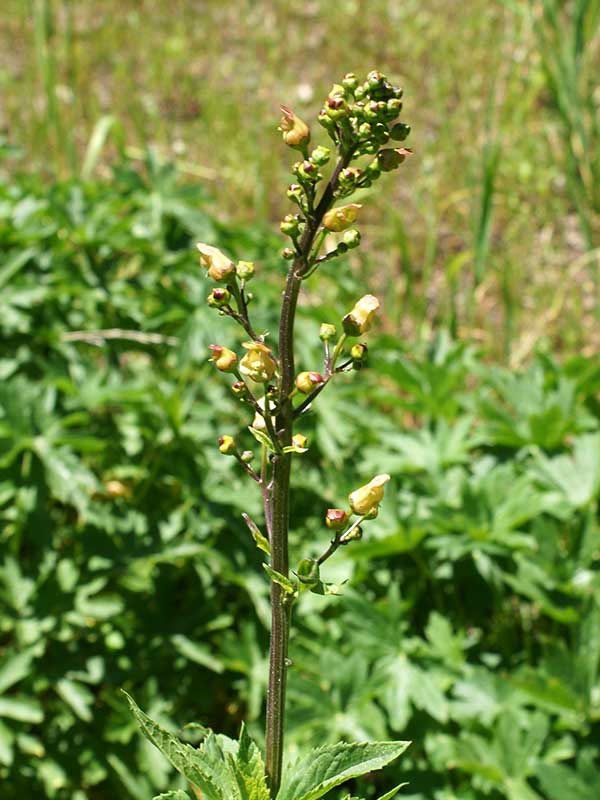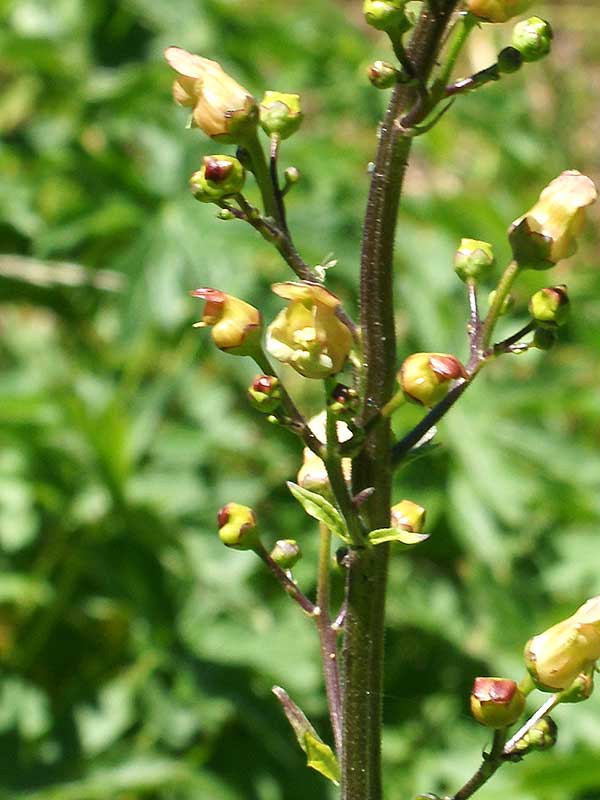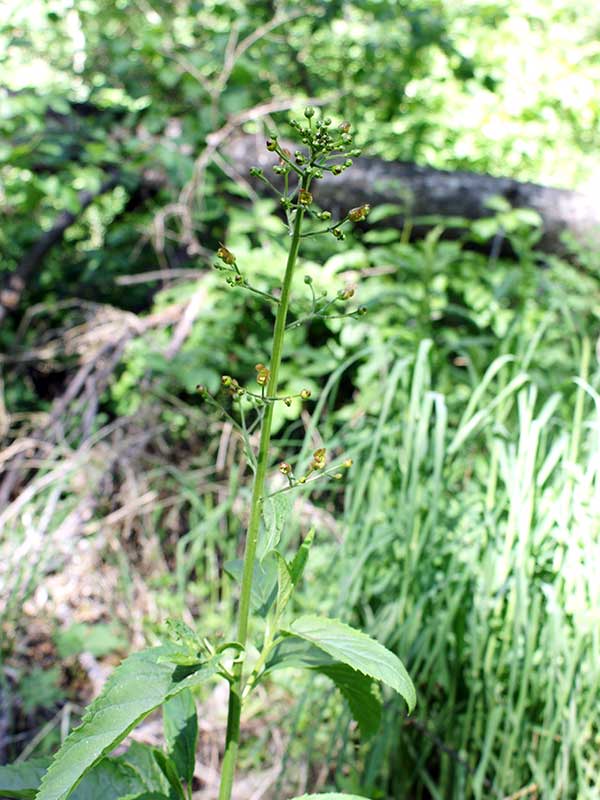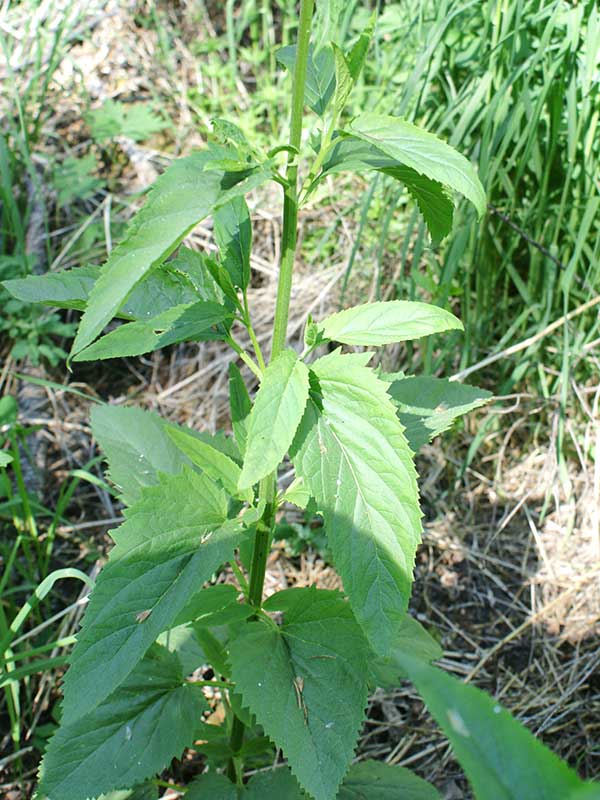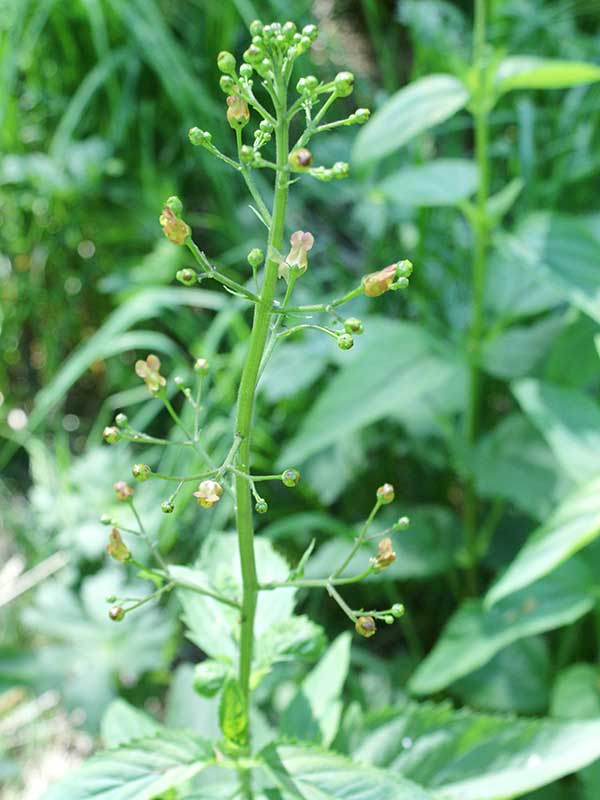Scrophularia lanceolate / lanceleaf figwort
- teeny, snapdragon-like flowers
- flowers urn-shaped, mostly yellow, with red or green at the tips
- flowers look like they aren’t yet opened
- flowers on elongated panicle at the top of a tall-ish plant
- opposite leaves like stinging nettle without the stingers
- up to 5 feet tall in full sun/partial shade
Also known as: western figwort, early figwort, American figwort, hare figwort, bunny in the grass, l’herbe du siege
Synonym: Scrophularia leporella, S. occidentalis, S. pectinata
Acknowledgement: When I first found this plant in July (the year doesn’t matter), I thought I would just keep an eye on it – for when the buds actually opened and the flowers appeared. It was only after Gwynne Owen and Raylene McCalman started discussing it on the Wild flowers of the Teton Valley Facebook page that I realized it was fully blooming. As Gwynne said, she only noticed it when she saw a hummingbird visiting it. Raylene said she grew it in her garden and it was the favorite of pollinators. So, with great thanks to them, here is a blurb about the lanceleaf or western figwort.
Starting with the flowers, then… the figwort inflorescence is a wide-open panicle, i.e. the individual flowers are somewhat spread apart on short peduncles with short, glandular trichomes. There may be – as in the gallery photos – small leaves in the axils. The individual flowers are about ¼ x ¼ inch long/across. At that size, it is somewhat difficult, without a hand lens, to see that they are tubular with rounded bases and 5 rounded lobes… rather spherical or urn-shaped overall. The 2 upper lobes are longest, in a snapdragon-ish sort of way, and are reddish brown to reddish green on the outside. One lower lobe folds down, also in a snapdragon-ish sort of way, and is green. Yellow stamens and a style poke out of the mouth. The corolla is green, possibly tinged with brown or pink.
The overall figwort plant is up to 5 feet tall. The leaves are oppositely arranged, a not especially common feature. They are sharply, coarsely toothed and triangular or lance shaped, up to 5 inches long. The petioles are short, with narrow wings. The leaves look similar to Stinging Nettle (Urtica dioica), but without stinging hairs.
The ripe fruit is a brown, teardrop-shaped capsule about ½ inch long. The seeds are very small and black and are released when the capsule splits in half.
In addition to spreading by seed it has a caudex and spreads by rhizomes and divisions.
Lanceleaf figwort is found in meadows, fields, open woods and edges, on scree, in thickets, and on roadsides, all these being habitats with full or partial sun exposure.
Interesting bits – Figwort is a Venus-ruled plant. For health and protection, hang the herb inside the home. In the Victorian era, when the “meaning” of individual flowers was a popular thing, inclusion of figworts in a garden or bouquet signified “future joy”.
Although figwort is neither tasty nor fragrant in a good way, there is a story that when Cardinal Richelieu laid siege to La Rochelle (France) in 1627-1628, the Protestants inside the garrison were reduced to eating figwort. From this comes the French common name, l’herbe du siege. Be warned, however, if you are ever besieged, that figwort contains saponins, cardioactive glycosides, flavonoids, and resins.
The National Park Service says that the common name, bunny in the grass, “comes from the fact that its small copper and green flowers are not particularly showy, but are well camouflaged, just as are the baby rabbits after which they are named. Further if you look carefully at individual flowers, especially from the side and back, you can see a strong resemblance to a bunny’s head, even down to seeing two tiny ears!” Someone has too much time on their hands and a wild imagination (besides me).
The genus name, Scrophularia, dates back to the concept in medicine referred to as the Doctrine of Signatures. That concept hyped the idea that if a plant resembled some human condition or human deformity (e.g., a small tumor or glandular swelling), the plant could be used to treat it. In this case, the condition is one found in human lymph nodes. The outward manifestation, called scrophula, resembles the knobs on the rhizomes of certain figworts. This dates back to about 1470.
| Color | |
|---|---|
| Family | |
| Blossom size | |
| Inflorescence size | |
| Inflorescence type | |
| When? | |
| Where? |
